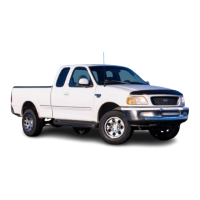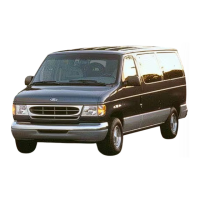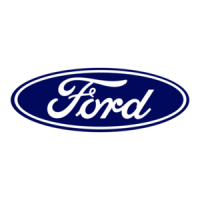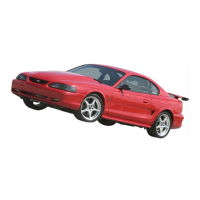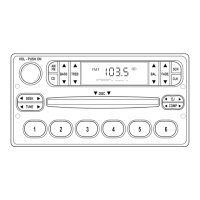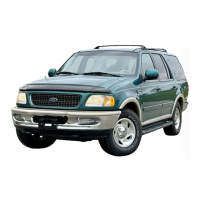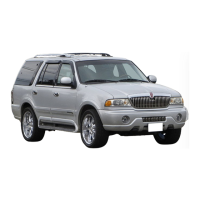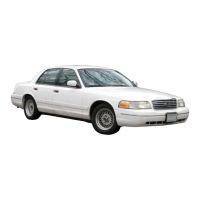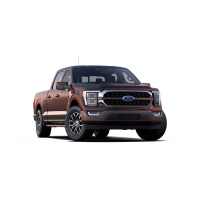
 Loading...
Loading...
Do you have a question about the Ford 1998 F-150 and is the answer not in the manual?
| Brand | Ford |
|---|---|
| Model | 1998 F-150 |
| Category | Automobile |
| Language | English |
Guidance on the first 1,600 km of driving to ensure proper engine performance.
Details on the guide's content, notices for specific vehicle use, and important special notices.
Details the instrument cluster, gauges, and their functions for monitoring vehicle status.
Explains the meaning of various warning lights and audible chimes on the instrument panel.
Instructions on operating headlamps, foglamps, and daytime running lights.
How to adjust panel brightness, use autolamp, and operate climate control systems.
How to operate the 4WD system, power windows, locks, and mirrors.
How to adjust and use various types of seats, including power and lumbar support.
Essential precautions for using safety restraints and seat belt operation modes.
Guidance on child restraints, including installation, precautions, and air bag interaction.
Essential steps and safety precautions for starting the vehicle engine.
Important precautions to avoid the dangers of exhaust fumes and ensure proper ventilation.
Information on brake system operation, ABS, and warning lights for safe braking.
Details on automatic and manual transmission operation, including gearshift positions.
How to operate the 4WD system, including shifting modes and off-road driving.
How to use hazard lights and reset the fuel pump shut-off switch after a collision.
Explanation of fuse function, identification, and replacement, including panel locations.
Detailed steps for changing a flat tire, including spare tire information and safety precautions.
Essential preparation, connection, and jump-starting procedures for a dead battery.
How to service your vehicle, recommended parts, and essential safety precautions during maintenance.
Identifying engine components, checking/adding engine oil, and oil change schedules.
How to check and add brake fluid, clutch fluid, and windshield washer fluid.
How to check and add engine coolant, including fail-safe cooling system operation.
How to check and add power steering and transmission fluids, including capacities.
Information on driveline lubrication and battery maintenance procedures.
How to check and replace wiper blades and service tires, including pressure and rotation.
Safety for automotive fuels, choosing the right fuel, and emission control system maintenance.
General guidance on checking and replacing exterior light bulbs, including headlamps.
How to properly wash, dry, wax, and repair paint chips on the vehicle exterior.
How to clean interior fabric, instrument panels, and wheels.
How to clean and maintain safety belts and leather seats for proper function and appearance.
Lists Motorcraft part numbers and fluid capacities for various vehicle systems.
Key engine specifications and exterior dimensions for different body styles.
Location of the vehicle identification plate, VIN, and engine number for identification.
Information on how to contact the National Highway Traffic Safety Administration (NHTSA) to report defects.
